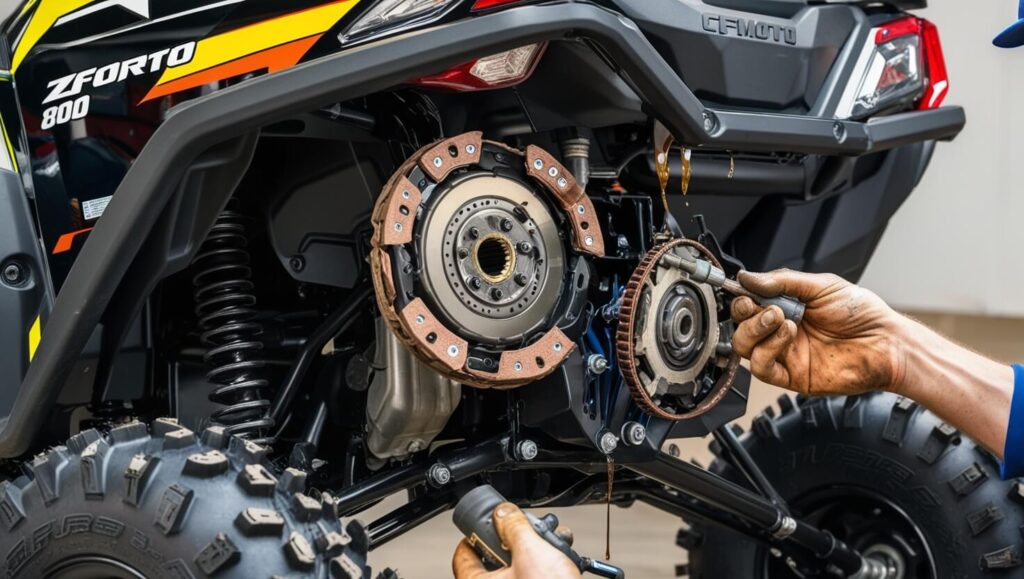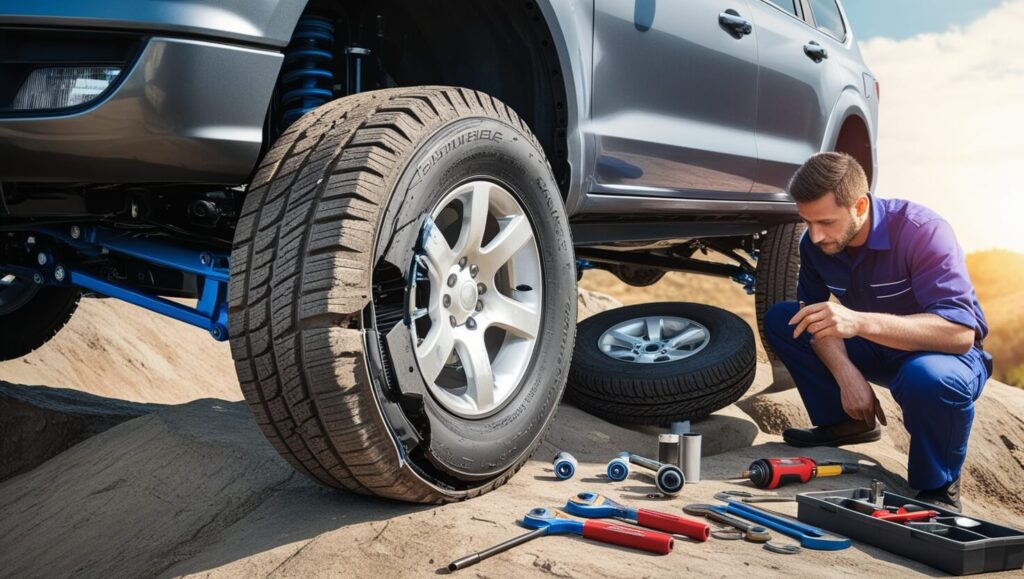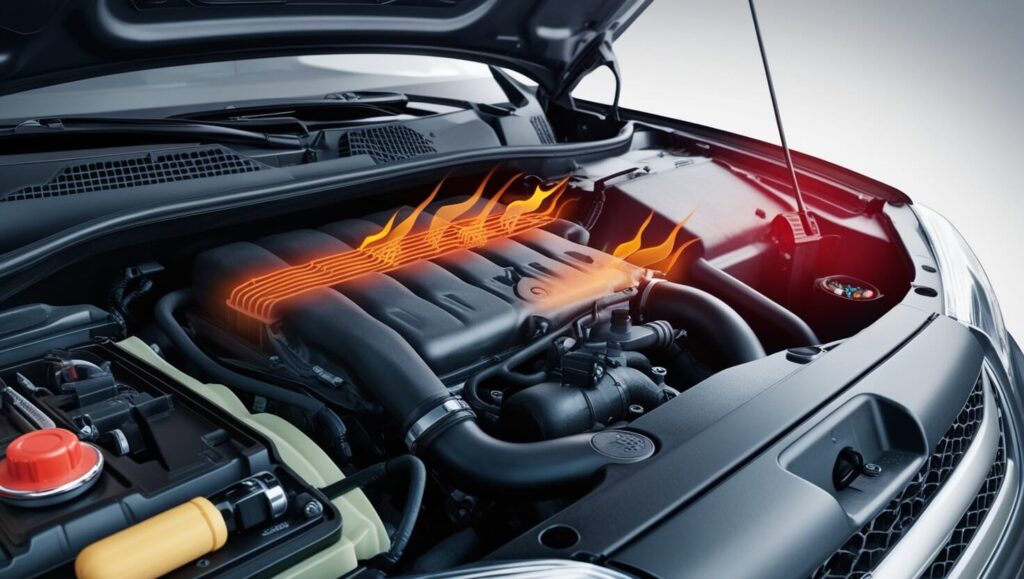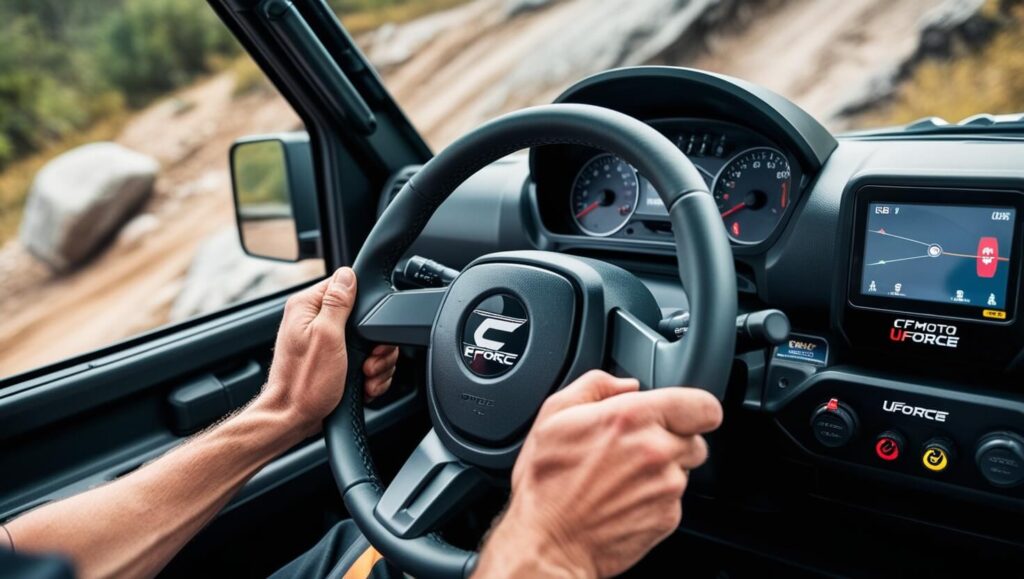I’ll never forget the first time my Honda Pioneer 500 broke down mid-ride. We were deep in the woods, and the engine just cut off—no warning.
At first, panic set in, but once I figured out the problem (a clogged air filter), it felt like a victory.
Experiences like this are common among Pioneer 500 UTV owners. But with the right knowledge, these moments can be more about triumph than frustration.
In this article, I’ll guide you through similar issues and how to handle them.
The most common Honda Pioneer 500 problems are shifting issues, starting problems, electrical issues, clutch problems, brake issues, suspension problems, PTO issues, engine overheating, engine misfire, throttle problems and steering issue.
Honda Pioneer 500 problems and Solutions
Now we are going to explore the most common problems of Honda Pioneer 500 that you might face on offroading. Also explore the problems of Honda pioneer 520.
1. Honda Pioneer 500 Shifting Problems

If you’re experiencing difficulties with your Honda Pioneer 500, it’s essential to recognize the signs early.
Common symptoms of shifting problems include difficulty in engaging gears, grinding noises while shifting, or the vehicle slipping out of gear during operation.
Additionally, you might notice an unresponsive shifter, which can be frustrating. These indicators suggest that there might be an issue that requires your attention.
Identifying the Causes
Several factors can contribute to shifting problems in the Honda Pioneer 500.
One prevalent cause is low or contaminated transmission fluid, which can hinder smooth gear transitions.
Another reason could be worn or faulty clutch components that fail to disengage properly, leading to grinding noises.
Additionally, issues with the shifter assembly or cable connections may impair the shifting process, resulting in incomplete engagement.
Solutions
To address these shifting problems, start by checking the transmission fluid level and its condition; topping up or replacing it can often resolve issues quickly.
If the clutch components are worn, it may be necessary to replace them. Regular maintenance, including inspecting the shifter assembly and ensuring all connections are secure, is critical for optimal performance.
If issues persist, consulting with a professional mechanic can provide further insights and solutions tailored to your Honda Pioneer 500.
Also explore the problems of Honda Pioneer 700
2. Starting Issues

If you own a Honda Pioneer 500, experiencing starting problems can be frustrating.
Common symptoms include a clicking sound when you turn the key, sluggish engine cranking, or no response at all.
These issues often indicate battery problems, faulty connections, or ignition system failures.
Identifying the Causes
When dealing with Honda Pioneer 500 starting issues, it’s essential to identify the underlying causes.
A depleted battery is often the primary suspect. If the battery isn’t holding a charge, it might not provide sufficient power to start the engine.
Additionally, corroded or loose battery connections can disrupt the electrical flow. In some cases, the ignition switch might be faulty, leading to no response when you try to start your machine.
Also explore the problems of Honda Pioneer 1000
Practical Solutions to Start Your Engine
To resolve starting problems in your Honda Pioneer 500, first check the battery. Ensure it is charged and connections are clean and tight.
If the battery is old, consider replacing it with a new one, as batteries typically have a lifespan of about 3 to 5 years.
If the battery is in good condition, inspect the ignition switch and wiring for any signs of damage. A quick test with a multimeter can help identify any electrical issues.
3. Honda Pioneer 500 Electrical Issues

If you own a Honda Pioneer 500, you may experience several electrical problems.
Symptoms often include dimming lights, failure to start, and erratic gauge readings.
These issues can arise suddenly and might leave you stranded, making it crucial to address them promptly. If you notice any of these signs, do not hesitate to investigate further.
Potential Causes
Understanding the root cause of electrical issues is vital. The problem might originate from a faulty battery, corroded connectors, or even a malfunctioning alternator.
Since the electrical system in your Honda Pioneer 500 is intricate, pinpointing the exact issue can be challenging.
However, it is essential to check all connections for any signs of wear and tear, as they commonly contribute to failures.
Solutions
Addressing electrical problems requires a systematic approach. If the battery is dead, a simple replacement might resolve your issue.
For corroded connectors, cleaning with a wire brush and applying dielectric grease can prevent future problems.
If complications persist, professional inspection by a certified mechanic ensures that all electrical components function correctly.
Additionally, regularly scheduled maintenance and checking all electrical systems can help you avoid these frustrating issues in the long run.
4. Clutch Problems

When dealing with clutch issues in the Honda Pioneer 500, you may notice several symptoms that can interfere with its performance.
Common signs include difficulty shifting gears, unusual noises while engaging the clutch, or an overall lack of response when pressing the pedal.
If you find that the vehicle hesitates or experiences slipping sensations, it’s crucial to address these issues promptly to prevent further damage.
Common Causes
There are several reasons why your Honda Pioneer 500 might experience clutch problems.
The most prevalent causes include worn-out clutch pads, improper adjustments, or even hydraulic failures in the system.
If the clutch fluid is low or contaminated, it could lead to malfunctioning.
Understanding these causes can help you make informed decisions about your vehicle’s maintenance and repairs.
Solutions
Addressing clutch issues in your Honda Pioneer 500 can often be straightforward. For minor problems, adjustments might be all that’s needed.
Ensure to check the clutch fluid levels and replace worn-out pads as necessary. If the problems persist, seeking assistance from a professional mechanic would be advisable.
They can diagnose the issue accurately and provide solutions tailored to your vehicle. Regular maintenance and checks can prevent these problems from recurring and ensure a smoother ride.
5. Brake Problems

When experiencing brake issues with your Honda Pioneer 500, you’ll notice some tell-tale signs.
Common symptoms include a soft or spongy brake pedal, unusual noises while braking, or the vehicle taking longer to stop than usual.
These issues can indicate problems with brake fluid, worn-out brake pads, or other critical components.
Identifying the Causes
Various factors can contribute to brake malfunctions. One major cause might be the loss of brake fluid, which can occur due to leaks in the brake lines or worn seals.
Additionally, if the brake pads are excessively worn, they will fail to provide adequate friction, leading to decreased braking efficiency.
Regular maintenance and inspection are essential to catch these issues before they escalate.
Solutions
Resolving brake issues in your Honda Pioneer 500 typically involves a few straightforward steps.
If you find that the brake fluid level is low, topping it up with the manufacturer-recommended fluid can sometimes solve the issue.
However, if there’s a leak, consulting a professional is crucial. For worn brake pads, replacing them promptly ensures your safety and the reliability of your vehicle.
Always check with a qualified mechanic for an accurate diagnosis and to address any underlying problems.
6. Suspension Issues

The Honda Pioneer 500 is a remarkable vehicle known for its durability and performance.
However, like any machine, it can experience suspension problems.
Common symptoms include a rough ride, excessive noise while driving, uneven tire wear, and a noticeable drop in handling capability.
If you notice these symptoms, addressing them promptly is crucial to maintaining performance and ensuring safety.
Causes
Suspension issues can arise from several causes.
One common cause is worn-out bushings or shock absorbers, which can lead to a significant loss of ride comfort.
Another potential issue is improper alignment, which can occur if you hit a large bump or curb.
Additionally, dirt and debris can accumulate in the suspension components, causing them to malfunction.
Regular maintenance and inspections can help prevent these problems from escalating.
Effective Solutions
Addressing Honda Pioneer 500 suspension problems requires a systematic approach.
First, inspect the suspension components to identify worn parts. Replacing damaged bushings or shocks will often restore ride quality.
If misalignment is a concern, a professional alignment service can rectify this. Regularly cleaning suspension parts from dirt and debris can also enhance their lifespan.
For persistent issues, consulting a certified mechanic ensures that complex problems are diagnosed correctly and resolved efficiently.
7. Honda Pioneer 500 PTO Problems

If you own a Honda Pioneer 500, you may encounter problems related to the Power Take-Off (PTO).
Symptoms can range from unusual noises to complete PTO failure. Recognizing these symptoms early can save you time and enhance the longevity of your machine.
Common Symptoms and Their Causes
One of the most common symptoms of PTO problems is a grinding noise during operation. This could indicate worn gears or insufficient lubrication.
You might also notice the PTO not engaging at all; this can stem from a malfunctioning clutch or a broken cable.
Overheating is another concern, often caused by excessive load or insufficient maintenance.
Solutions
To address PTO issues on your Honda Pioneer 500, start by performing regular maintenance checks. Changing the oil and lubricating the PTO system can often resolve grinding noises.
For engagement issues, inspect the clutch system and replace any broken cables.
If overheating occurs, ensure you’re not exceeding the machine’s weight limits and take breaks during heavy use.
If the problem persists, consider seeking professional assistance to avoid further damage.
8. Engine Overheating

When you experience engine overheating in your Honda Pioneer 500, there are several symptoms to look out for.
Common indicators include a higher than normal temperature gauge reading and steam or smoke rising from your engine.
Additionally, you may notice a loss of power while driving, unusual noises, or even a warning light on your dashboard.
Recognizing these signs early can help you address the issue before it causes severe damage.
Causes of Overheating
Understanding the causes of overheating in your Honda Pioneer 500 is crucial for effective troubleshooting.
One primary reason could be a malfunctioning thermostat, which regulates engine temperature. Another potential cause may be a coolant leak, which can result from worn hoses or a damaged radiator.
Additionally, debris blocking the air intake or issues with the water pump can contribute to overheating. Regular maintenance checks can help prevent these problems from escalating.
Solutions to Fix Overheating Issues
To resolve overheating issues in your Honda Pioneer 500, start with a thorough inspection. Ensure that the coolant levels are sufficient and that there are no visible leaks in hoses or the radiator.
If the thermostat is malfunctioning, replacing it is often a straightforward solution. Clearing any debris from the air intake can also help improve airflow, reducing heat build-up.
For complex problems, consulting a trusted mechanic for a professional diagnosis is recommended.
By being proactive about your vehicle’s maintenance, you can avoid overheating issues and keep your Honda Pioneer 500 running smoothly.
9. Engine Misfire

If you have a Honda Pioneer 500, you may encounter a few symptoms indicating an engine misfire.
You might notice your engine running roughly, experiencing a loss of power, or even seeing a decrease in fuel efficiency.
These signs can be alarming, but understanding them is the first step toward resolving the issue.
Common Causes of Misfires
There are several causes for engine misfire in the Honda Pioneer 500.
One of the primary reasons is faulty spark plugs, which play a crucial role in igniting the fuel-air mixture. If these plugs are worn out or damaged, you can expect performance issues.
Another cause could be fuel delivery problems, including clogged fuel filters or failing fuel pumps.
Lastly, issues with the ignition system or electrical components can also lead to misfire symptoms.
Solutions
Addressing misfire problems begins with proper diagnostics.
Start by inspecting and, if necessary, replacing the spark plugs. It’s vital to ensure they are compatible with your model. Following this, check the fuel system for any blockages or malfunctioning components.
Regular maintenance, including fuel filter replacements and ignition system checks, will help prevent misfires in the future.
If issues persist, consulting a certified mechanic can provide further insights and professional solutions.
10. Honda Pioneer 500 Throttle Problems

If you’ve noticed performance issues while operating your Honda Pioneer 500, it may be experiencing throttle problems.
Common symptoms include unresponsive throttle, irregular acceleration, or even stalling. Recognizing these signs early can help prevent more serious issues down the line.
Common Causes of Throttle Issues
Throttle problems can arise from various sources. One primary cause is a dirty or malfunctioning throttle body.
Debris can accumulate over time, leading to decreased airflow and diminished engine performance.
Additionally, issues with the throttle cable or even electronic components can contribute to throttle responsiveness issues.
Regular maintenance is crucial in identifying and addressing such problems before they escalate.
Solutions
To tackle throttle problems, start with basic maintenance checks. Cleaning the throttle body can often restore proper function.
If this doesn’t resolve the issue, inspect the throttle cable for fraying or wear. Replacing a damaged cable can significantly enhance performance.
In electronic throttle systems, conducting a diagnostic scan can reveal fault codes, guiding you toward necessary repairs. Always refer to your owner’s manual for maintenance schedules to prevent future problems.
11. Steering Problems

If you’re noticing issues with the steering of your Honda Pioneer 500, you’re not alone. Many users report similar concerns.
Common symptoms include excessive play in the steering wheel, difficulty in turning, or unusual noises when steering.
If you experience one or more of these issues, it’s essential to address them promptly to avoid further complications.
Possible Causes Behind Steering Issues
There are several reasons why you might encounter steering problems in your Honda Pioneer 500.
One primary cause could be worn-out steering components, such as tie rods or bushings, which can lead to looseness in steering control.
Additionally, improper alignment or tire pressure can also contribute to steering difficulties. If you’ve recently hit a bump or pothole, it may have exacerbated existing issues.
Solutions
Addressing steering problems is crucial for your safety and the overall performance of your Honda Pioneer 500.
Start by inspecting the steering system for any visible wear or damage. If you find any faulty components, it’s advisable to replace them.
Regular maintenance, including checking alignment and tire pressure, can prevent future steering issues.
If the problem persists, consider consulting a professional mechanic who can provide a thorough diagnosis and assist with advanced repairs.
Your Honda Pioneer 500 should deliver reliable steering, enhancing your driving experience and safety.
Conclusion
By following this guide you can easily get rid from the Honda Pioneer 500 Problems because here I provide the complete guide about it.
FAQs
Is the Honda Pioneer reliable?
Yes, the Honda Pioneer is known for its reliability, offering durable performance in various terrains. With regular maintenance, it handles off-road adventures well and experiences fewer breakdowns compared to other UTVs in its class.
Why buy a Honda Pioneer 500?
The Honda Pioneer 500 is compact, affordable, and versatile, making it perfect for narrow trails. Its simplicity, easy handling, and reliability make it an excellent choice for off-road enthusiasts seeking both fun and functionality.
How do you increase the top speed of a Honda Pioneer 500?
To increase the top speed, you can modify the air intake, upgrade the exhaust system, and adjust the fuel controller. However, always consider safety and the vehicle’s mechanical limits when making speed-enhancing modifications.
What is the top speed of the Honda Pioneer 500?
The top speed of the Honda Pioneer 500 is approximately 40-45 mph. This makes it ideal for navigating rough terrains and trails while providing enough speed for recreational off-roading.